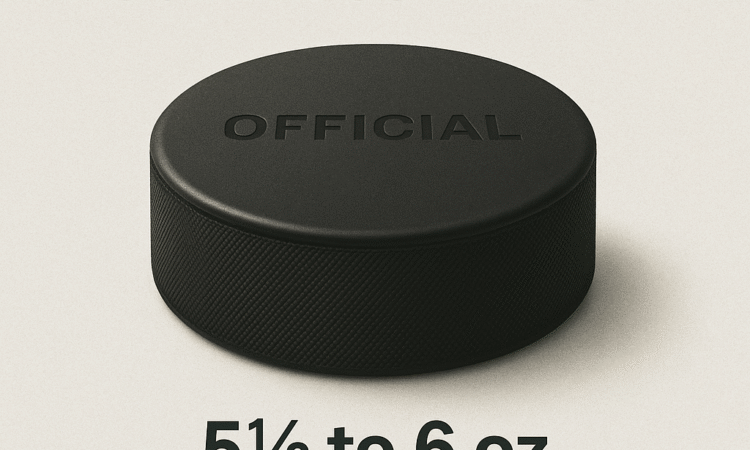The regulatory weight of a regular hockey puck in top professional leagues like the NHL is normally between 5.5 and 6 ounces or 156 and 170 grams. This specification guarantees stability and uniformity in the games, giving players the tools they need to improve their talents with standardized equipment.
Following these weight guidelines is essential to preserving the sport’s integrity at the highest level since it guarantees that all teams and athletes compete in the same circumstances. This painstaking attention to detail demonstrates how dedicated professional hockey organizations are to maintaining an even playing field where players’ skill and strategy are the sole determining factors.
Are there different weights for hockey pucks?
Yes, there are variations for different age groups and training purposes:
- Youth Hockey (8 & Under): Lighter pucks weighing 4-4.5 ounces (110–128 grams) and colored blue are used for easier handling.
- Training Pucks: Heavier pucks (up to 10 ounces/280 grams) in pink or reddish-orange are used to develop shot power and wrist strength, but are not used in games.
Why does a hockey puck’s weight matter?
The weight affects various aspects of the game:
- Speed and Handling: Heavier pucks have less speed and bounce, requiring more force for shots but offering better control.
- Durability: The standard weight ensures the puck can withstand wear and tear without breaking or losing shape.
- Safety: Too light a puck could become a projectile and cause injuries.
Are there pucks with different weights used in other sports?
Yes, there are significant differences in the world of puck dimensions. One representative instance can be observed in the domain of underwater hockey, where a somewhat heavier puck—roughly three pounds or 1.4 kilograms—is utilized. The lead core in this particular puck serves two purposes: it sinks to the pool bottom and allows for fine control in the underwater environment.
This weighted puck’s special features are designed to meet the demands of underwater play, giving players an extra degree of difficulty and the opportunity to hone their skills as they maneuver below the surface. These varied adaptations highlight the sport’s versatility by demonstrating how equipment may be modified to meet the unique needs of different hockey sub-disciplines.
Conclusion
To sum up, the NHL and other professional organizations’ rule criteria for hockey pucks are essential to maintaining a fair and uniform playing field. The 5.5 to 6-ounce weight range was deliberately chosen to emphasize the commitment to equity and uniformity among all teams and players at the highest level.


